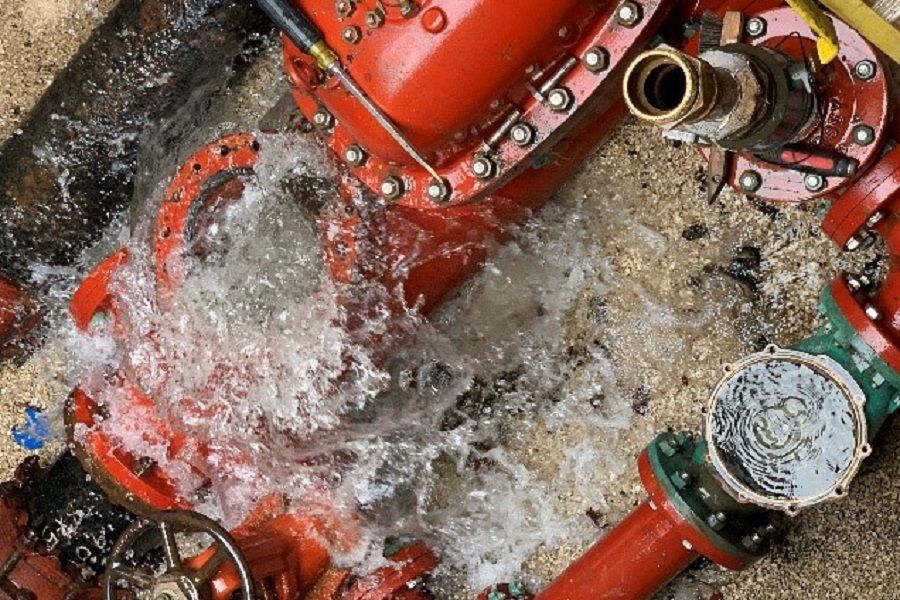This article was published on: 09/13/21 12:50 PM
With the climate crisis here, water management becomes big business — and part of big tech.
If you have heard the crackle of stale, yellow grass beneath your feet this summer, you’re not alone. Nearly 100% of Oregon is currently in severe drought, according to the United States Drought Monitor. Since 2015 Oregon has experienced drought each and every summer, the severity of which continues to increase as global temperatures rise.
Gov. Brown has responded to Oregon’s drought by ordering government agencies to stop watering lawns. Large institutions like Oregon State University have also cut back on water consumption by installing low-flow faucets and toilets; watching water-meter usage to spot leaks; and installing rainwater-catch basins in newer buildings and an irrigation control system across campus to measure humidity, temperature and evaporation rate.
“All Oregon State University employees and students can contribute by conserving the state’s dwindling water supply within the operation of our campuses, centers and offices,” said OSU Interim President Becky Johnson in a prepared statement.
“At the same time, OSU researchers are engaged in efforts to understand and address the many impacts of the drought and ensuing wildfires, and OSU Extension agents are providing support in communities experiencing hardships.”
Oregon’s drought issues are only going to get worse as time goes on. Sophisticated irrigation technologies and predictive analytics could mean the difference between Oregonians merely feeling annoyed during the summer months or feeling the pain of ecological and economic collapse.
Not only is drought murder on lawns, it’s incredibly costly. An estimate from the National Center for Environmental Information found drought cost $9 billion for businesses every year.
Oregon farmers and ranchers have a particularly difficult time with drought. Not only do these businesses depend on water consumption to produce output, but farm workers are less able to function in the heat. Livestock also need to drink more water and spend more time in cooling stations when temperatures are high.
Dave Mackie, CEO of Austin-based startup Olea Edge Analytics, says water management is spurring an arms race of aqua-tech. Using sensors, artificial intelligence and predictive algorithms, Olea Edge hopes to make a splash in Portland and other cities losing money on drought.
According to Mackie, cities lose 20% to 30% of their water on average due to runoff, leakage and other maintenance issues resulting from use. While his technology doesn’t create more water, the process — called Hydraulic Modeling — monitors and adapts quickly to leaks and stuck turbines, and predicts future problems using AI. The process could save cities and companies millions of dollars in water bills and increased production. A city water meter hooked up to an Olea Edge Analytics sneson. Photo: Olea Edge Analytics.
“We’re computerizing what hasn’t been computerized before,” says Mackie. “The majority of the meters we install are for predictive technology. We identify problems that are going to be there and fix them effectively.”
Just like a leaky faucet or a drip under the kitchen sink, water-loss issues are usually not identified until they have already caused a significant amount of damage. Mackie estimates a city like Portland could save 3 billion gallons of water each year. For reference, the city consumes approximately 8.7 billion gallons annually.
The system is also doubly sustainable, as it runs off solar power.
In the meantime, Oregon universities are taking their own steps to conserve water. This year 13 researchers from OSU’s College of Engineering — in partnership with the University of Washington — are participating in AgAID, a $20 million federal effort to develop artificial intelligence to address farming’s biggest problems, including diminishing water supplies caused by climate change.
One thing OSU’s program and Olea Analytics has in common? Big data.
“We are bringing in algorithms and data science as part of the puzzle,” says Alan Fern, professor of computer science and lead investigator representing Oregon State. “Water management is one of the most significant thrusts. A lot of it is setting up good data pipelines for what is there.”
Written by Sander Gusinow




